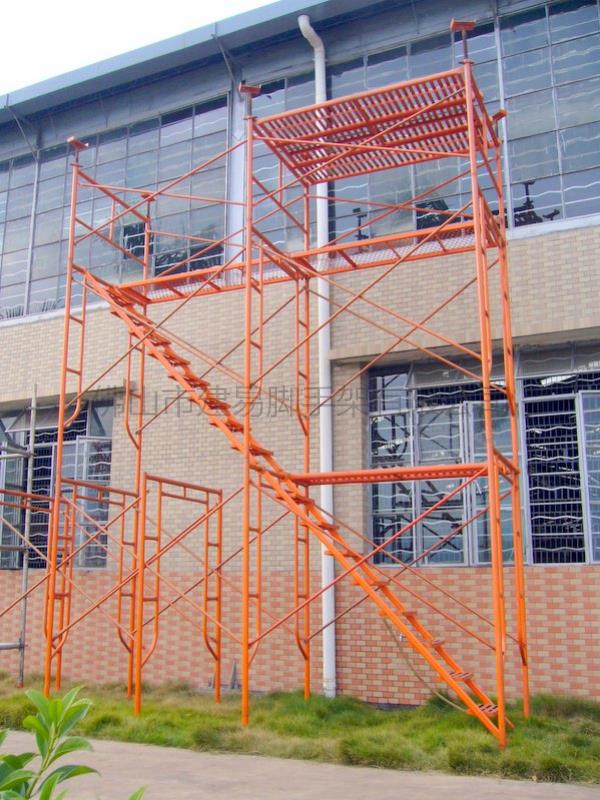Scaffolding Security: Leading Tips Every Employee Must Know
Scaffolding Training: Enhancing Abilities for Safety and Effectiveness ======================================================================
Scaffolding training is important for building workers' safety and effectiveness. It furnishes them with skills to recognize dangers, collaborate efficiently, and accomplish productivity. The training concentrates on sensible methods for erecting and changing scaffolding, stressing safety devices usage and emergency situation procedures. By buying this training, firms keep secure work environments and boost job standards. The next areas will supply even more insights into the vital abilities instructed, safety measures, performance advantages, and applying training programs.
Value of Scaffolding Educating
Scaffolding training plays a necessary function in guaranteeing the safety and security and performance of construction workers at job sites. Skill advancement is an essential facet of this training, as it equips employees with the necessary knowledge and capabilities to set up, take down, and deal with scaffolding frameworks safely.
Without correct training, workers may do not have the skills needed to identify prospective dangers, usage tools correctly, and follow safety methods, placing themselves and others in danger. Office safety is a top concern in the building and construction market, making scaffolding training an essential investment for companies seeking to maintain a safe workplace.
Trick Skills Instructed in Training
An essential part of scaffolding training involves imparting employees with the important skills required to navigate building and construction websites securely and effectively. Practical techniques and hands-on method are vital facets of the training educational program. Employees are educated exactly how to set up, take apart, and modify scaffolding frameworks utilizing industry-approved techniques. With hands-on technique, they learn to determine possible risks, make use of safety and security equipment appropriately, and ensure the stability of the scaffolding.
Moreover, team collaboration and interaction skills are highlighted throughout training sessions. Scaffolders are trained to work effectively in teams, collaborating their efforts to enhance productivity while keeping safety and security requirements. Communication skills are essential for sharing crucial details regarding tasks, safety protocols, and possible threats on the construction site. Scaffolders are shown to connect clearly and concisely with team members, supervisors, and other tradespeople to make sure a smooth workflow and protect against accidents. By developing these essential abilities, workers become competent in scaffold assembly and maintenance, adding to a more secure and much more reliable workplace.
Precaution and Protocols
Workers in scaffolding training are presented to a detailed set of safety measures and methods designed to guarantee a safe and secure workplace on construction sites. Safety and security devices plays a crucial function in assuring the health of workers at raised heights. This consists of harnesses, headgears, handwear covers, and non-slip shoes, every one of which are crucial for protecting against accidents and injuries.
In addition to the appropriate use safety equipment, workers are learnt emergency situation treatments to be adhered to in situation of mishaps or hazardous circumstances. Emergency procedures cover procedures for responding to incidents such as falls, scaffold collapse, or negative climate condition. It is crucial for workers to be fluent in these treatments to act promptly and effectively in emergency situations.
Performance Benefits in Building
Enhancing performance through streamlined processes and maximized process is an essential emphasis in optimizing efficiency advantages within the building and construction industry. By applying efficient techniques, construction companies can substantially boost productivity degrees. temporary roofs One method this is achieved is by decreasing downtime via reliable preparation and scheduling of jobs. This guarantees that employees are frequently engaged in productive activities, resulting in enhanced outcome without compromising high quality.
Furthermore, optimizing operations can result in considerable expense financial savings for construction tasks. Reliable usage of resources, such as products and equipment, reduces waste and minimizes unnecessary expenditures. Furthermore, boosted performance typically results in faster project completion times, permitting firms to reduce labor prices and possibly tackle more projects within the exact same timeframe.
Carrying Out Educating Programs
With the quick improvements in building and construction technologies and security guidelines, the execution of complete training programs has actually become essential for ensuring the proficiency and safety and security of employees on building sites. Educating techniques and application approaches play a vital duty in equipping employees with the needed abilities to do their jobs effectively and securely.
To enhance skill advancement, training programs must include hands-on method, simulations, and interactive sessions to replicate real-life scaffolding circumstances. Furthermore, utilizing a selection of evaluation techniques such as created examinations, useful evaluations, and on-site observations can assist determine the efficiency of the training and identify areas for renovation.
Carrying out a well-rounded training program that covers not only the technological aspects of scaffolding yet likewise highlights security methods and run the risk of administration is crucial for preparing workers to handle the obstacles they may experience on construction websites. By prioritizing detailed training programs, building and construction business can foster a culture of security, efficiency, and continuous learning among their labor force.
Scaffolding Qualification Process
The scaffolding qualification procedure is important for making certain that workers satisfy the required safety criteria.
This procedure typically involves: – a review of certification needs, – an in-depth training program covering essential subjects, and – a last test combined with a functional evaluation.
Recognizing the components of this accreditation process is fundamental in preserving a safe and efficient work environment. https://woolwichscaffolding.co.uk
Accreditation Demands Introduction
Successful conclusion of the scaffolding accreditation process is a mandatory action for individuals looking for to work in the construction market. To meet market criteria, accreditation requirements usually consist of:
- Understanding of scaffold kinds and makes use of
- Understanding of safety policies and treatments
- Capability in assembly and disassembly methods
- Familiarity with tons capacities and weight circulation
- Ability to check and maintain scaffolding devices
Fulfilling these qualification needs ensures that workers have the required skills and knowledge to run scaffolding securely and effectively on construction websites, lowering the danger of mishaps and improving general efficiency.
Educating Period and Web Content
During the scaffolding certification process, prospects undertake extensive training sessions to get vital skills and expertise needed for safe and reliable scaffold operation. The training intensity is developed to cover a wide variety of topics, including safety laws, equipment handling, setting up, and taking apart procedures.
Analysis techniques such as practical demonstrations, composed examinations, and hands-on workouts are utilized to assess the candidates' understanding and effectiveness. Personalized components are customized to deal with specific needs and obstacles, making certain that students get detailed direction relevant to their functions.
Practical application workouts play an important function in reinforcing academic expertise, permitting prospects to apply found out principles in real-world situations. By combining theoretical discovering with hands-on technique, the training furnishes individuals with the necessary know-how to master scaffold operations.
Exam and Practical Evaluation
To assess candidates' expertise in scaffold operation, a detailed examination and practical analysis are integral elements of the scaffolding qualification procedure. The test assesses the academic knowledge of scaffold safety and security guidelines, setting up procedures, and threat understanding. Furthermore, the functional demo analyzes candidates' capacity to construct, take down, and evaluate scaffolds correctly.
The mix of both components warranties that licensed people have the necessary skills and understanding to function securely and efficiently with scaffolding systems. The practical analysis enables candidates to showcase their hands-on abilities, while the knowledge evaluation tests their understanding of important principles. With each other, these analyses make certain a total evaluation of prospects' readiness to operate in scaffolding operations.
- Theoretical understanding assessment
- Practical presentation assessment
- Scaffold assembly and dismantling examination
- Danger recognition and mitigation analysis
- Examination procedures expertise confirmation
Frequently Asked Concerns
What Are the Typical Difficulties Encountered by Employees During Scaffolding Training?
During scaffolding training, obstacles faced by workers may consist of lack of experience, anxiety of elevations, and insufficient understanding of security procedures. Solutions entail detailed training programs, hands-on technique, and continuous support to guarantee proficiency and confidence.
Exactly How Does Scaffolding Training Influence Office Society and Interaction Amongst Construction Teams?

Improved workplace society and interaction amongst construction groups are significant outcomes of scaffolding training. Improved teamwork stems from shared understanding of security methods, leading to raised efficiency and decreased threats on building websites.
Can Scaffolding Training Help Reduce the Variety Of Work Environment Accidents and Injuries in the Building And Construction Industry?
Improving office safety through comprehensive scaffolding training can considerably reduce the variety of workplace mishaps and injuries in the building market. By boosting skills and expertise, workers can run much more successfully, ensuring a much safer work environment.

Are There Any Kind Of Certain Rules or Regulations Regarding Scaffolding Educating That Companies Need to Be Familiar with?
Employers must comply with regulatory requirements and compliance standards when it pertains to scaffolding training. Details laws dictate the necessary training procedures to ensure the safety and efficiency of employees in the construction industry.
Exactly How Does Scaffolding Training Differ for Various Kinds Of Building And Construction Projects, Such as Residential Vs. Commercial Structures?
Scaffolding training varies between property and business projects because of the distinctive precaution, strategies, and tools requirements. Residential projects often entail smaller structures and less complex configurations, while business buildings demand more complex systems and adherence to rigorous safety and security protocols.
Conclusion
In recap, scaffolding training plays an important duty in improving skills for safety and efficiency in building projects.
By focusing on key abilities, precaution, and protocols, employees can better understand the importance of correct scaffolding methods.
Executing training programs and getting certification can considerably boost the overall performance and efficiency of building and construction projects.
It is essential for workers to continuously upgrade their abilities and knowledge with training to assure a secure and efficient workplace.